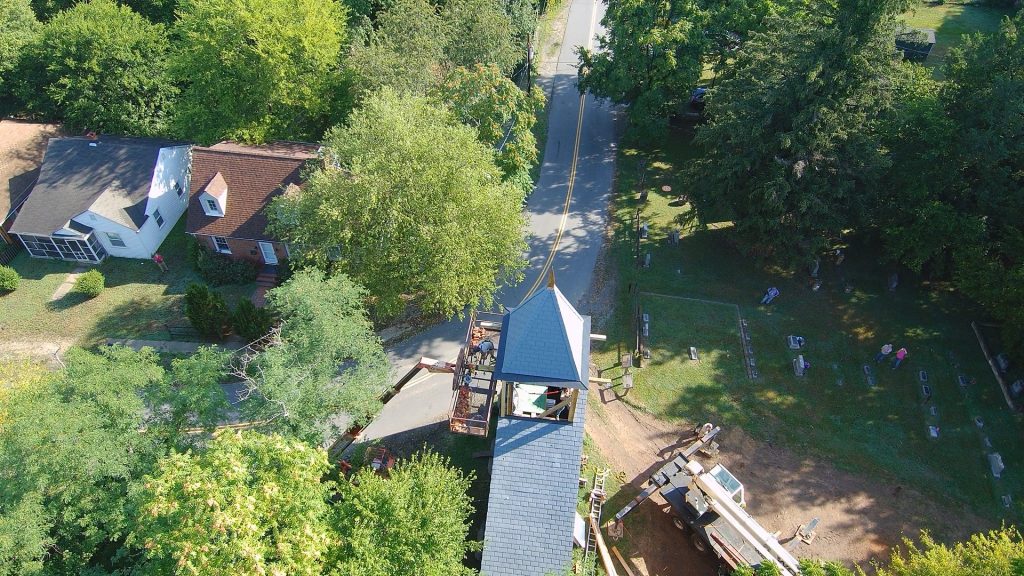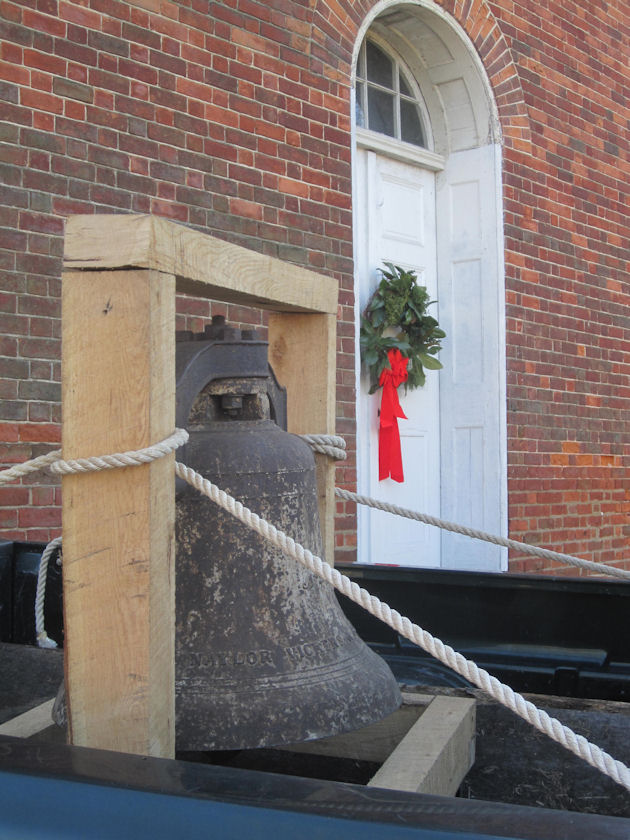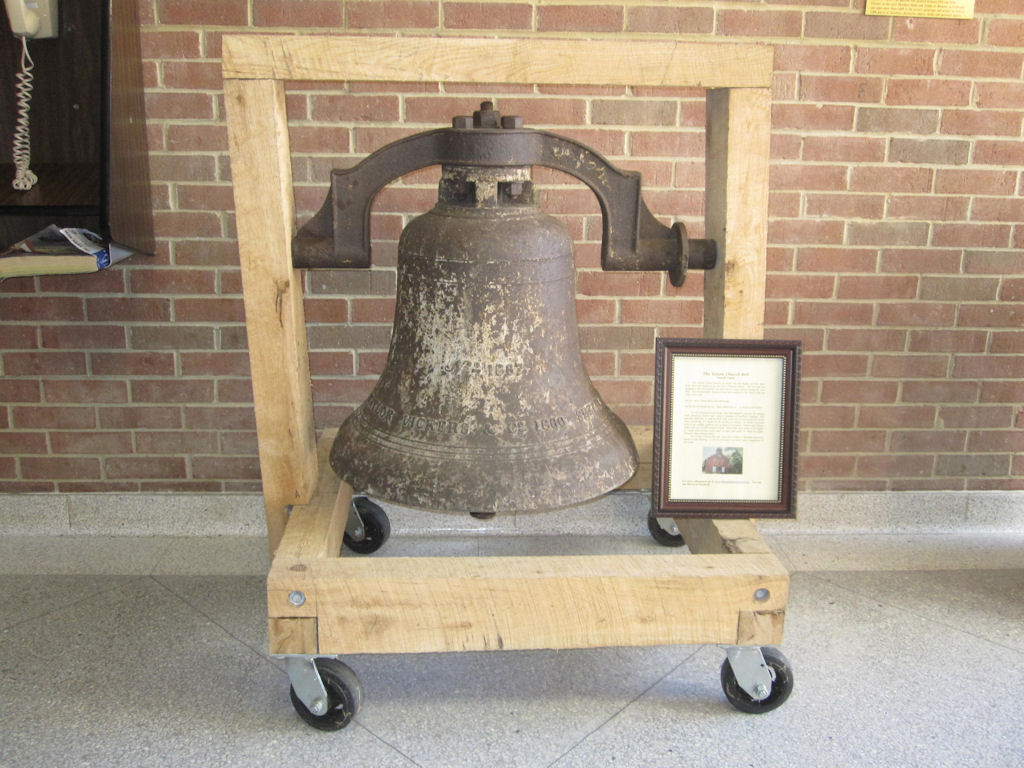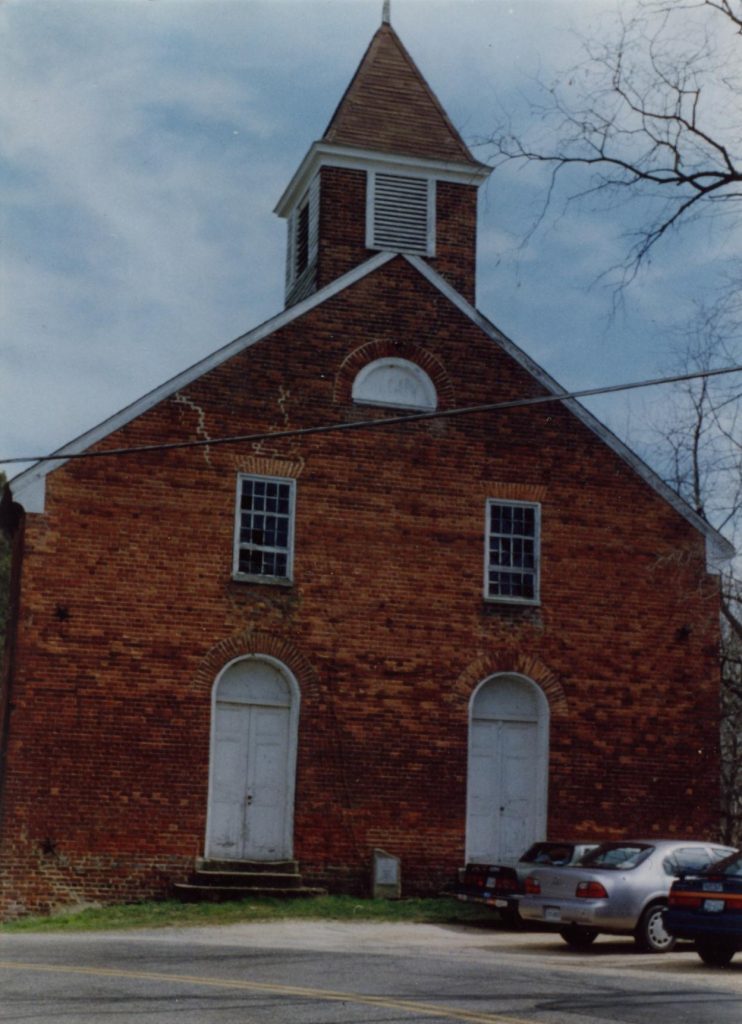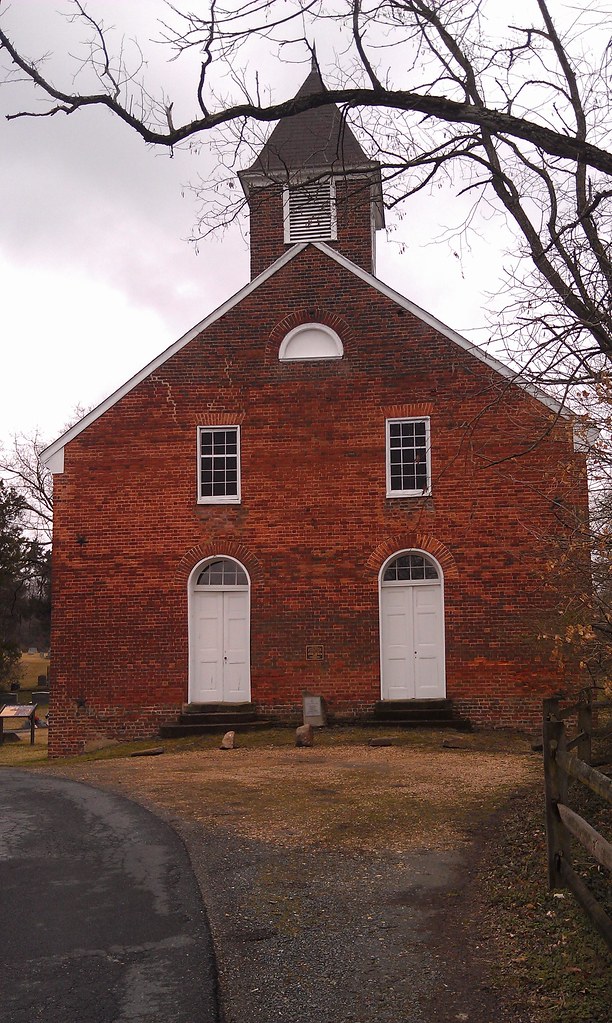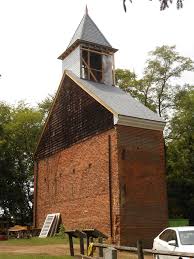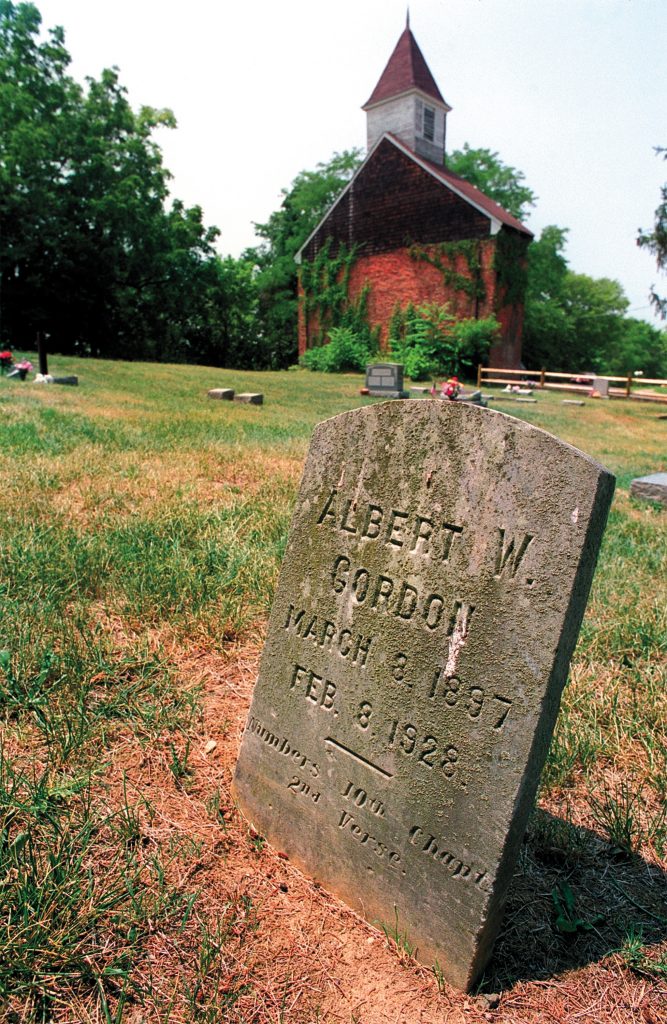Union Church
The first structure on this site, built in 1733, was known as the “Falmouth Anglican Church.” The site contained a “church and church yard” or cemetery. From l755 to 1760, a second church was built. It burned in 1818 and was rebuilt in 1819 utilizing portions of the same brick foundation. The current building was known to be standing in 1824. It derived its name, “Union Church,” as various denominations, including Episcopalians, Baptists, Presbyterians, and Methodists used it on a rotational basis. Since there were very few Episcopalians in Falmouth, the latter three denominations mainly used the church. Even though the understanding was to rotate Sundays, it was not uncommon to have three services following on the same Sunday. The church was a community gathering place. Abolitionist Moncure Daniel Conway preached there at least once. Anthony Burns, nationally known as the “Fugitive Slave,” was a member of its Baptist congregation.
During the Civil War, the Union Church served as a military hospital. It served as a billet for the Union troops, especially the 7th Michigan Infantry Regiment.
Two famous Black men are associated with the Union Church Historic Site in Falmouth. Jean DeBaptiste was buried in this church yard in 1804. Baptiste operated a ferry in Falmouth and served on an American ship during the Revolutionary War. Anthony Burns was permitted to preach at Union church despite being enslaved. His escape from bondage in 1854 and subsequent trial under the Fugitive Slave Act attracted national attention.
In 1935, the doors of the church were closed and the church abandoned. A rainstorm in 1950 collapsed the roof leaving only its facade and narthex which still stand today. (photo: Library of Congress)
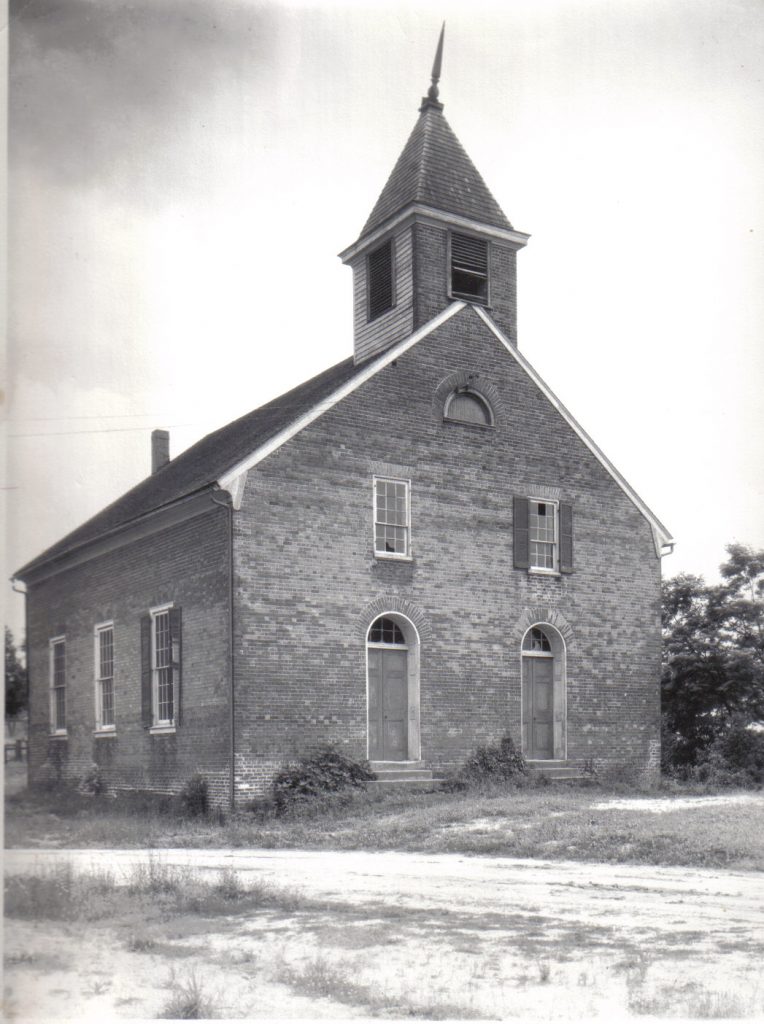
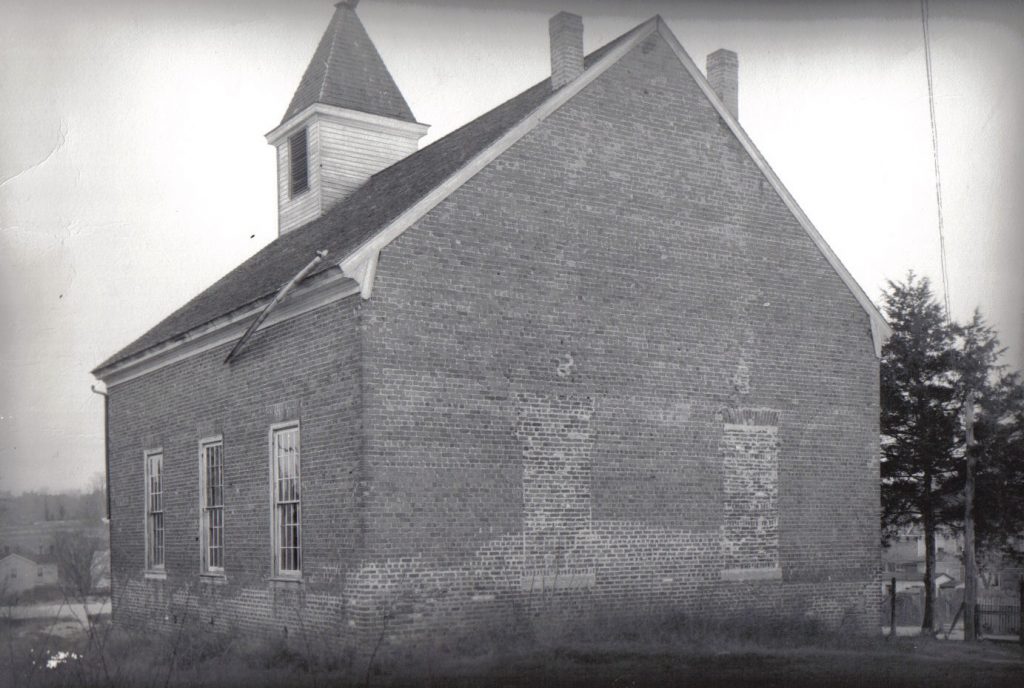
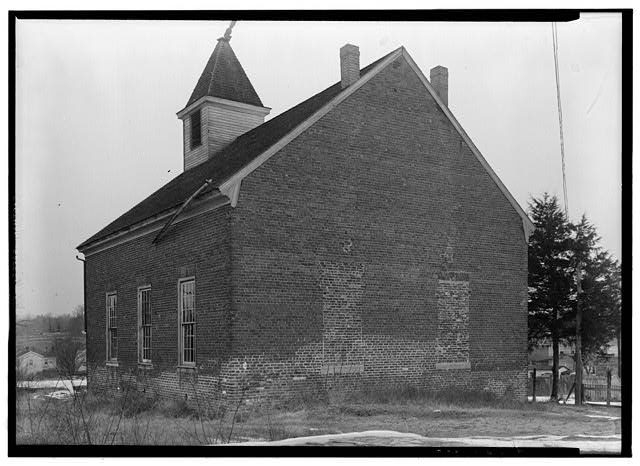
Photos of the tower restoration:


